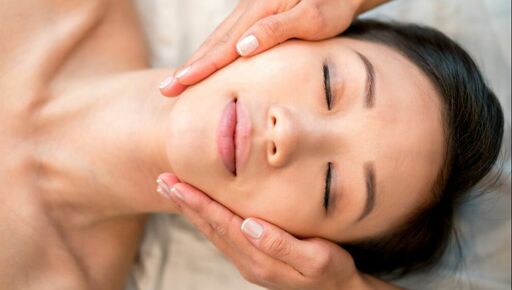TMJ & INTRA-ORAL MASSAGE THERAPY
This service can be booked with Nancy Na RMT, Cassidy Hodgkin RMT, Toby Neumann RMT or Annie Clarke RMT,
as part of a Massage Therapy session.
If this is an initial visit, please indicate on the intake form that you are having trouble with your jaw.
If this is a subsequent visit, please put this information in the "notes" section when booking.
Are you suffering from jaw or facial discomfort, jaw clicking or locking? Do you clench or grind your teeth when you concentrate, or at night? Do you wear a night guard? Do you have headaches, migraines, a sore neck, or worn teeth? Intra-oral massage can be a very effective way to relieve TMJ pain. Here’s what to expect at a TMJ appointment.
Assessment:
We will need to assess your TMJ (temporomandibular joint, a.k.a. your jaw) first to help determine the cause of dysfunction and understand the full symptom picture. This will include asking you questions, having you open and close your mouth while observing the movements of the jaw and any pain, clicking or locking. We will also measure your ability to open your mouth. Once on the massage table, we may palpate the joint while you open and close your mouth, so that we can feel what’s happening in the joint during movement.
Treatment:
Treatment is typically done with you lying on your back, face up on the massage table. If during the assessment however, we determine it would be beneficial, we may also do some treatment on the neck and shoulders as tension in these areas can contribute to TMJ dysfunction. Your facial muscles and jaw area will also be treated. If necessary, we may suggest intra-oral massage. This is a massage inside the mouth with gloves on. Usually, this means treatment of the muscles inside the cheek, but outside of the teeth. The area here can be quite tender to work on, but treatment inside the mouth can be much more effective than treatment of the same muscles outside the mouth and allows access to other involved structures.
Reassessment & Home Care:
After the treatment, we will reassess your jaw and see if there has been any improvement. This will allow both of us to see what effect the treatment has had. You will be provided with homecare instructions to further help the jaw.
as part of a Massage Therapy session.
If this is an initial visit, please indicate on the intake form that you are having trouble with your jaw.
If this is a subsequent visit, please put this information in the "notes" section when booking.
Are you suffering from jaw or facial discomfort, jaw clicking or locking? Do you clench or grind your teeth when you concentrate, or at night? Do you wear a night guard? Do you have headaches, migraines, a sore neck, or worn teeth? Intra-oral massage can be a very effective way to relieve TMJ pain. Here’s what to expect at a TMJ appointment.
Assessment:
We will need to assess your TMJ (temporomandibular joint, a.k.a. your jaw) first to help determine the cause of dysfunction and understand the full symptom picture. This will include asking you questions, having you open and close your mouth while observing the movements of the jaw and any pain, clicking or locking. We will also measure your ability to open your mouth. Once on the massage table, we may palpate the joint while you open and close your mouth, so that we can feel what’s happening in the joint during movement.
Treatment:
Treatment is typically done with you lying on your back, face up on the massage table. If during the assessment however, we determine it would be beneficial, we may also do some treatment on the neck and shoulders as tension in these areas can contribute to TMJ dysfunction. Your facial muscles and jaw area will also be treated. If necessary, we may suggest intra-oral massage. This is a massage inside the mouth with gloves on. Usually, this means treatment of the muscles inside the cheek, but outside of the teeth. The area here can be quite tender to work on, but treatment inside the mouth can be much more effective than treatment of the same muscles outside the mouth and allows access to other involved structures.
Reassessment & Home Care:
After the treatment, we will reassess your jaw and see if there has been any improvement. This will allow both of us to see what effect the treatment has had. You will be provided with homecare instructions to further help the jaw.

